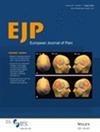Low back pain (LBP) is increasingly understood as a long-lasting condition with a variable course. Avoidance and persistence behaviour have been described to mediate pain persistence by potentially linking psychosocial factors and biomechanics. The resulting maladaptive changes in musculoskeletal structures can result in movement control impairment (MCI). This investigation aimed to observe avoidance and persistence behaviour and MCI in participants with acute LBP over 1 year and explore their association with pain persistence.
In this observational cohort study, 165 participants were assessed at five time points: ≤ 1 month (baseline), 2, 3, 6, and 12 months after the onset of acute LBP. Simultaneously collected clinical data such as self-reported outcomes at baseline for avoidance and persistence and assessments of MCI were filled in linear mixed-effects regression models.
The mixed-effects analysis revealed for the adjusted model that a one-point increase in persistence scores resulted in a 3.31-point increase in pain intensity while interacting with state anxiety over time (p = 0.05, 95% confidence interval 0.07–6.07). This effect was not found for avoidance behaviour at baseline (p = 0.21) and MCI.
The relationship between persistence and pain intensity throughout measurement suggests that continuing usual activities beyond pain, coupled with feelings of distress, may lead to persistent LBP. These results underscore the need for a therapeutic shift toward a multidimensional approach that considers the physical and psychological characteristics of persons with LBP. Screening for activity patterns in acute LBP is critical for providing tailored treatment and counselling.
In acute low back pain (LBP), maintaining usual activities despite pain and distress can contribute to the continuation of LBP. Alongside a multidimensional approach that considers physical and psychological factors, attitudes toward daily activities are also important. Screening for both maladaptive and adaptive activity patterns in individuals with acute LBP is essential for effective LBP management, improving patient outcomes, and preventing persistent pain.



